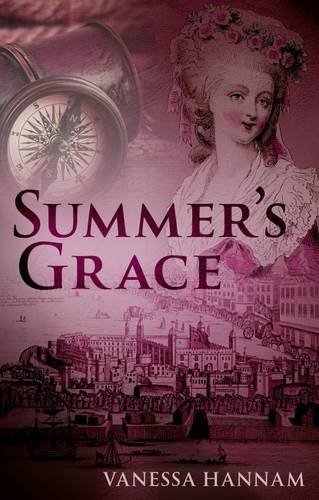Summer’s Grace
1740. Commodore George Anson sets off on his hazardous voyage to the New World with orders to capture the annual Spanish treasure galleon in Panama—an almost impossible task with the unseaworthy vessels and unfit crews the Admiralty have given him. He leaves behind his exotic mistress, Consuelo, and her black page, Pepe. Captain Matthew Lively also sails with Anson, leaving his long-suffering wife and three children. Mrs Lively is in despair; who knows when, or if, Matthew will come back, and, meanwhile, their sons have to be set up in the world, and what will become of her lovely musical daughter, Grace? When Consuelo befriends Grace, and introduces her to King George II’s court, both the King and Mr Handel are impressed by her musicality. There is much to learn about court ways, and at first, Grace struggles, but when she meets the handsome young harpsichord-maker, Peter Zuleikom, it seems as if her future may be a bright one. But the court is a dangerous place for an innocent young girl, and well-wishers are not always what they seem.
Summer’s Grace is a well-researched and enjoyable book about a little-explored historical period. I liked the details of court life: the bickering factions, the social intrigues, the preposterous costumes (Grace can hardly sit down, she is so corseted), and the importance of music to the Hanoverian court. However, there was too much of the authorial voice telling us what the various characters were thinking and explaining their motivation. I wanted scenes where I could hear the characters for myself and see the main protagonists being tested on stage. As a result, they were never quite three-dimensional for me. And there were multiple mistakes of ‘discrete’ for ‘discreet’, and ‘affect’ for ‘effect’. Still, a very enjoyable read.










